The Himba women continue practicing traditional personal hygiene methods, including using a smoke shower and a mixture of red ochre and butter-fat paste. These Indigenous people are properly referred to as the ‘OvaHimba’ when plural and are mainly semi-nomadic, residing in the northeastern region of Namibia. Unlike the closely related OvaTwa, who still depend on hunting and gathering for sustenance, the OvaHimba are pastoralists.
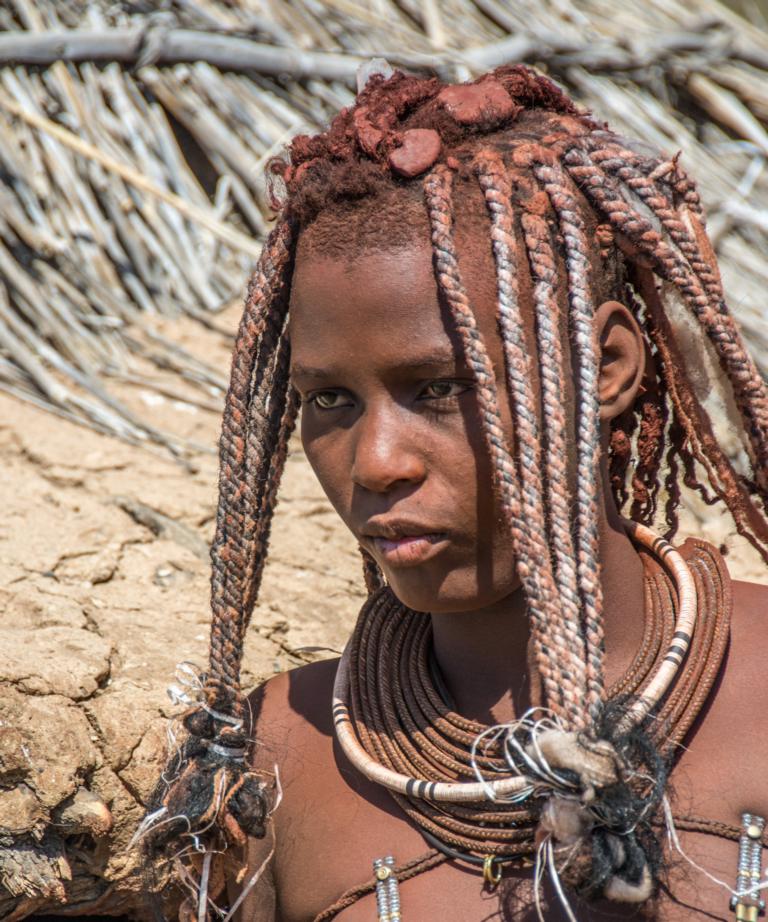
How are OvaHimba women holding up their private hygiene?
OvaHimba women only shower with water once in their lifetime, on their wedding day. Instead, they use ground red ochre and liquid butter fat for their hair and body daily for hygiene. This mixture gives their skin and hair a deep, earthy red color and pleasant scent. It also provides antibacterial benefits and blocks sweat glands. In addition, they take a daily smoke shower.

It’s worth noting that OvaHimba men do not use ochre-fat pastes on their hair or skin and only take smoke showers occasionally. The smoke shower is taken inside the woman’s hut, as OvaHimba society is polygamous. Each man has an average of two wives, so each wife has her own hut for herself and her children.
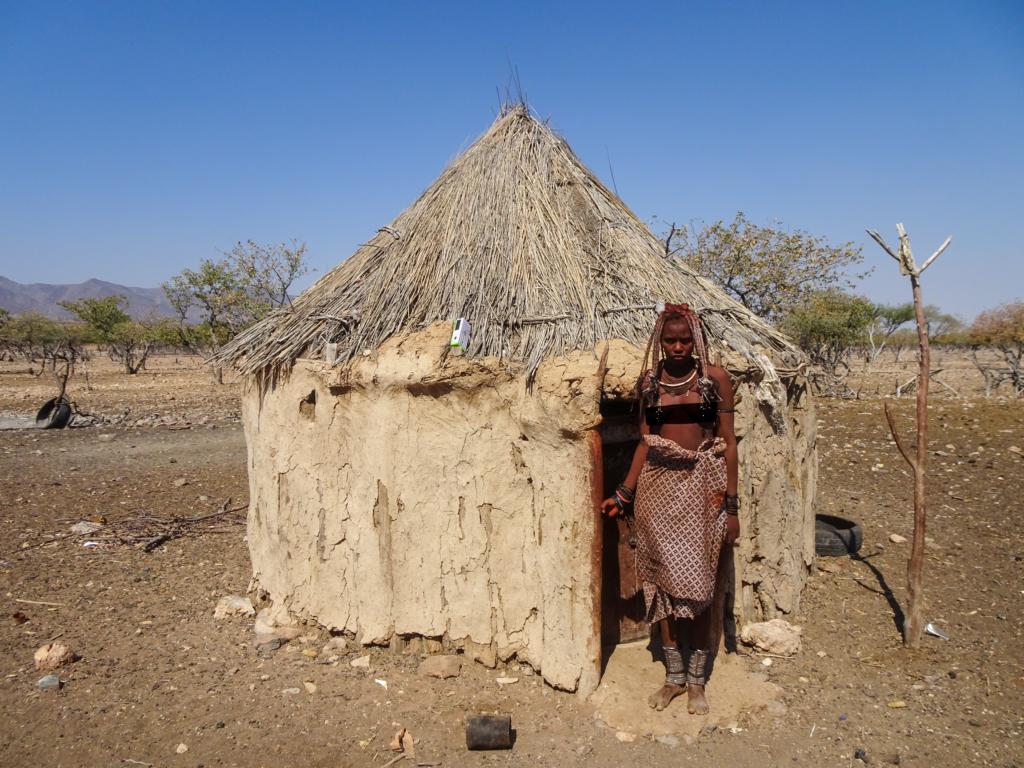
Before a smoke shower, the OvaHimba mix ground ochre with liquid butter fat. After that, they apply the paste to their entire body and hair.
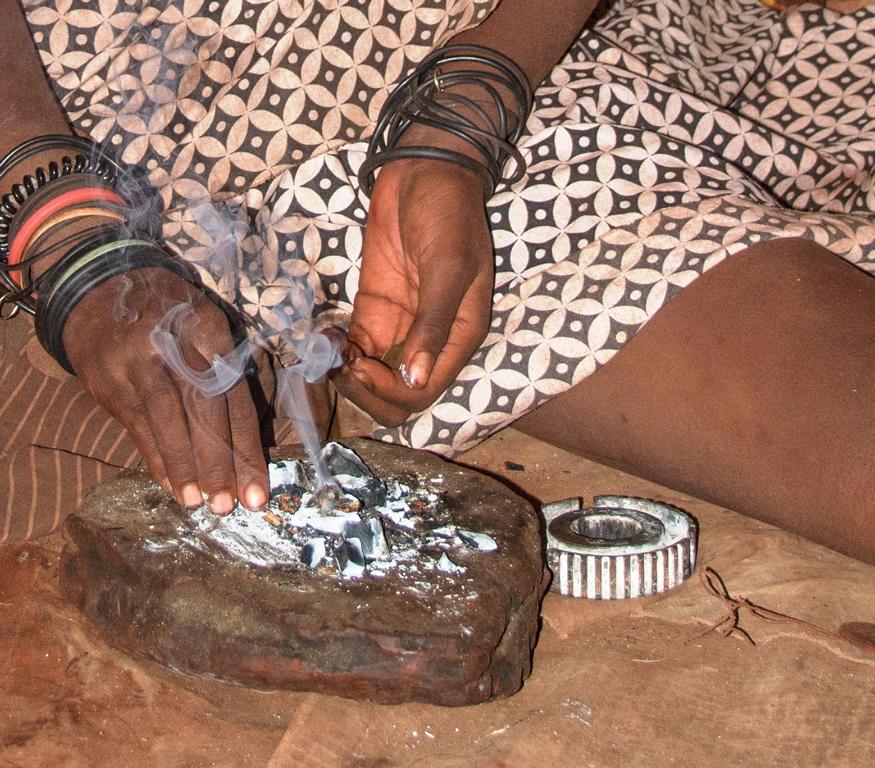
They then place glowing coals on a flat stone or other refractory base. Next, they put a small piece of plant resin, dried plant matter, or wood shavings on top of the embers. The remaining embers are arranged around the plant material so that it produces smoke but does not burn. This process creates the smoke that the OvaHimba use to cleanse themselves.
Incense materials used for smoke showering.
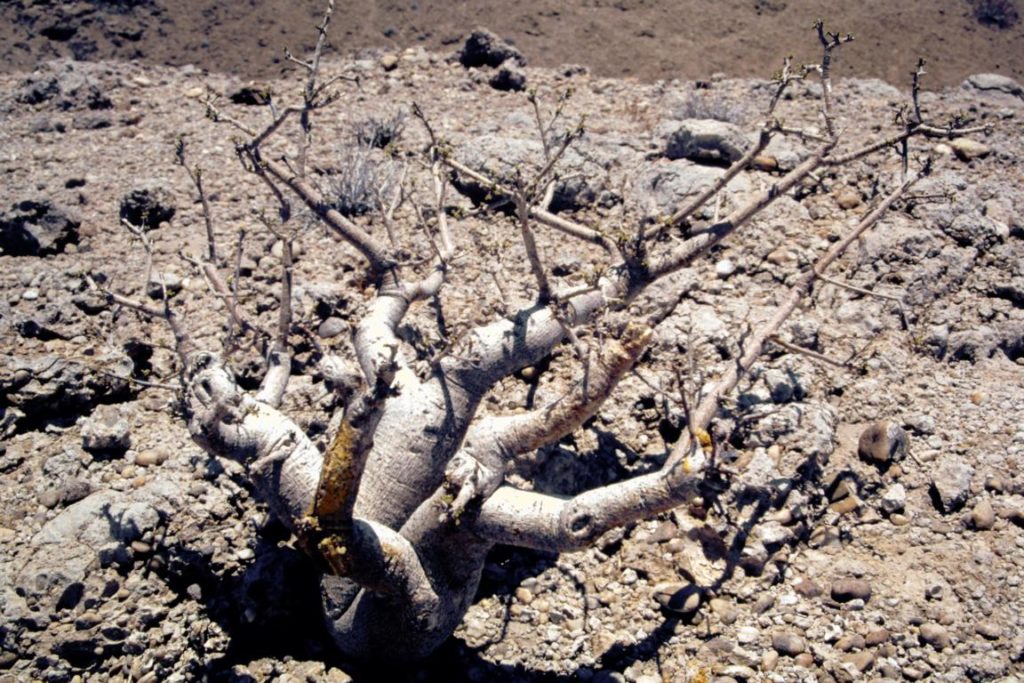
For thousands of years, the OvaHimba have primarily used resin from the Namibian myrrh tree (Commiphora wildii) for their smoke showers. This resin is known as Omumbiri. More information on this can be found here.
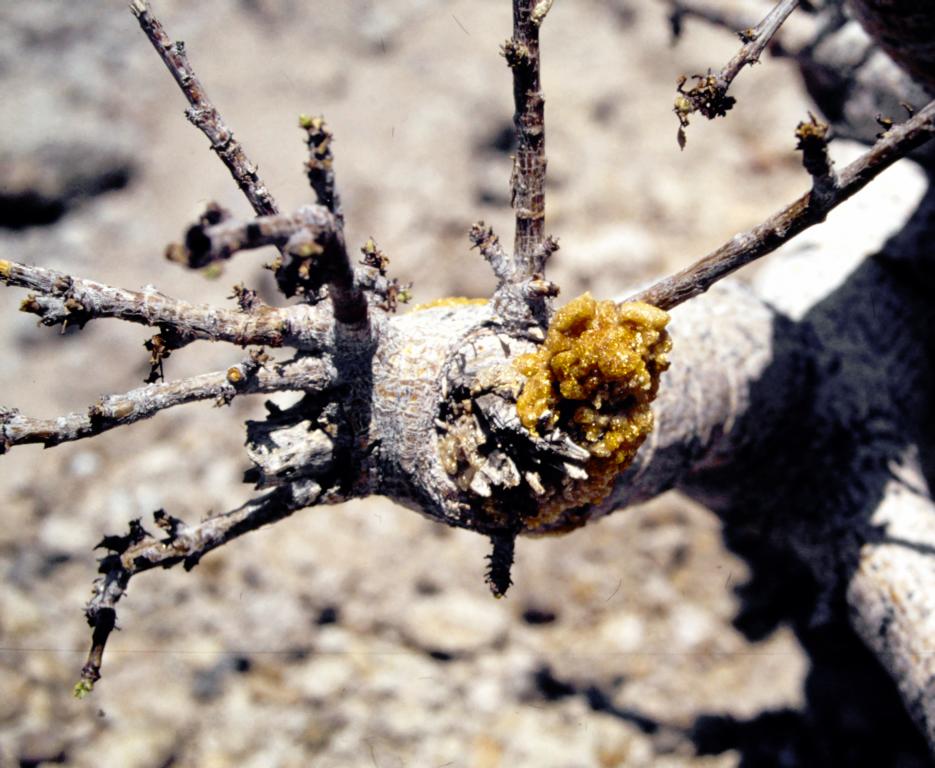
If resin from the Commiphora wildii tree is unavailable, the OvaHimba will use a similar resin from another species of Corkwood tree. This one is also known as Commiphora africana or Poison-grub corkwood. It is so named because San bushmen would dig beneath its shrubs for larvae, which they used to poison their arrows. The process of digging for these larvae is quite laborious. They live approximately two meters (6.6 feet) underground, but fortunately, in sandy soil. Commiphora africana wood is also used by Hadzabe people in Tanzania for friction fire lighting.
If Commiphora resins can not be obtained or the OvaHimba women desire a different fragrance, they will use Wild Sage (Syncolostemon canescens) for their smoke showers. This perennial plant is described below; see the link here. If neither Commiphora resins nor Wild Sage are available, the OvaHimba may use shavings of Mopane wood (Colophospermum mopane) for their smoke showers and other rituals. This wood is also known for its pleasant fragrance.
How is smoke showering done?
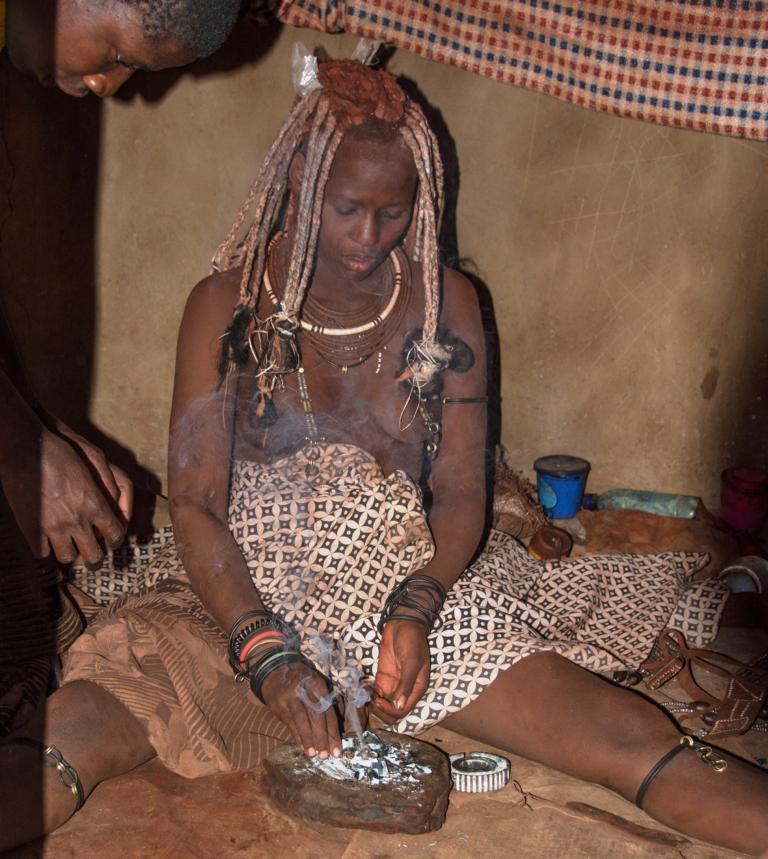
During a smoke shower, the base holding the embers is lifted, and the upper body is smoked first. Special attention is paid to areas where bacteria increase, such as the armpits underneath the breasts and chin. The smoking basin is then placed back on the ground, and a conical wicker basket is positioned over the embers.

This basket will be placed between the OvaHimba’s outstretched legs and close to their body. A blanket will then be draped over the smoking cone basket. The fabric covering the private parts will then be lifted, allowing the smoke to reach the entire lower body.
Lessons learned about the Himba smoke shower:
- OvaHimba women use a mixture of red ochre and butter fat to prevent bacterial growth on their hair and body.
- The primary incense used for smoke showering by the OvaHimba is Namibian myrrh, also known as Omumbiri.
- Other resins are from Commiphora africana and Wilde sage or Mopane wood shavings.
- Ochre embalming and smoke showering are part of the daily routine for OvaHimba women.
- In contrast, OvaHimba men do not use ochre paste and only take smoke showers occasionally.
.

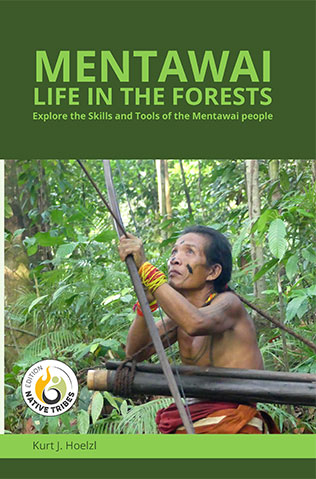
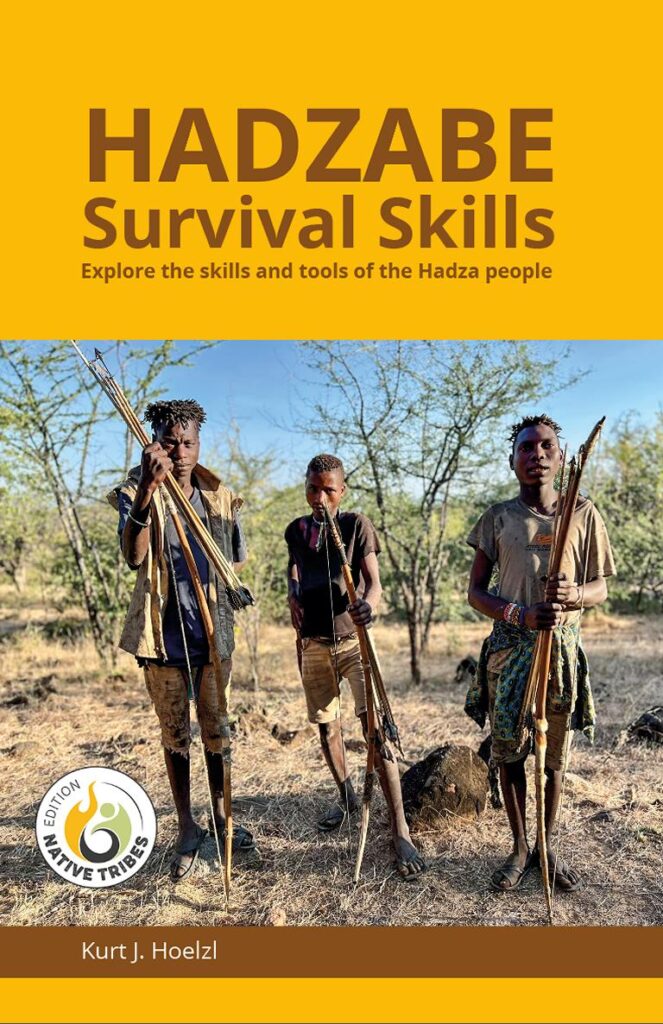

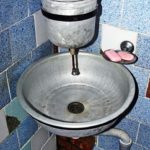

2 comments
Kurt Hoelzl
You’re right: oil or fat alone doesn’t hydrate the skin – it can’t add water to the skin. Hydration comes from water, and oils or butters help seal in that hydration by creating a barrier that reduces trans-epidermal water loss. So, how do the Himba maintain skin that appears supple and not dry, despite living in an arid environment and using no apparent source of water before applying their butterfat and ochre mixture (otjize)?
It works like that:
1. Natural Skin Moisture
Even in dry climates, human skin produces small amounts of moisture internally, from within the body. Sweat and natural skin oils, such as sebum, contribute to this. The Himba likely capitalize on that trace moisture and protect it by applying the otjize mixture regularly.
2. Otjize as a Moisture Barrier
The otjize paste, a mixture of butterfat and red ochre, functions as an occlusive, forming a protective layer over the skin. While it doesn’t hydrate, it slows down moisture loss by reducing evaporation. This helps trap whatever moisture is already present in the skin.
3. Clay and Mineral Effects
Red ochre (iron oxide) and possibly other fine minerals in the paste might contribute to skin health by absorbing sweat or oil and then releasing it slowly. Some clays can hold trace amounts of water, and the fine particles may help retain moisture by reducing airflow across the skin’s surface.
4. Behavioral and Environmental Adaptations
The Himba tend to avoid overexposure to the midday sun, which can reduce skin dehydration.
They may bathe with smoke from aromatic plants (“smoke baths”), which creates some humidity and opens pores, possibly aiding absorption of applied fats.
Diet also plays a role; hydration can be supported internally through water-rich foods and dairy products, such as milk.
In short:
The Himba don’t add water to the skin first, but they use natural body moisture and protect it with otjize. The butterfat acts as a sealant, and the ochre or clay helps protect the skin, potentially slowing moisture loss even further. This combination works remarkably well in a desert environment.
c
The skin does not appear dry, yet there is no water in the skin to seal with butterfat. How do they lock in moisture without water applied first? Oil cannot hydrate.